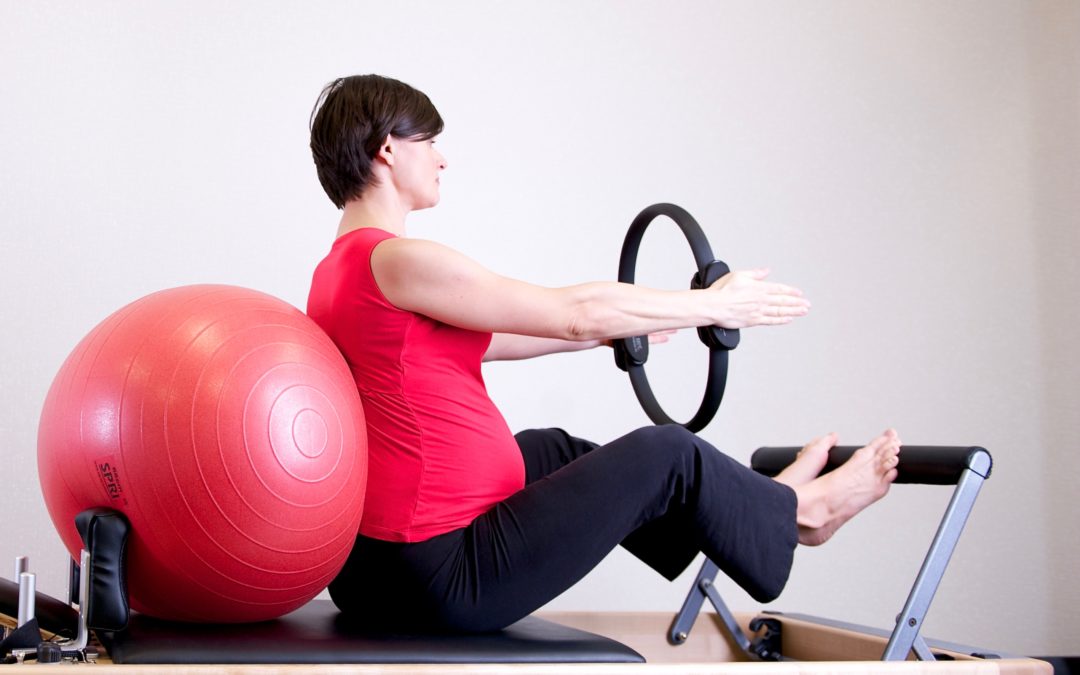First-time moms may be apprehensive about working out while pregnant, which may stand in the way of maintaining an active lifestyle. One question you may be itching to ask your health provider is: can I exercise while I’m pregnant?
Routine exercise during pregnancy is generally encouraged and can be very beneficial to you and your baby. Even if you didn’t exercise before your pregnancy, you might want to consider consulting your doctor to see if you should begin doing so in order to help reduce pregnancy symptoms, facilitate muscle tone, and also to ease labor pains. However, while exercise is ideal during pregnancy, some activities should be avoided to prevent harm. With the approval of your physician, consider some of the safe exercises below.
Workout Activities To Avoid During Pregnancy
Although prenatal exercises such as light yoga and stretching are generally great activity options throughout pregnancy, there are some activities involved in certain workouts you should consult with your doctor before engaging in. For example, it is advised to avoid certain yoga poses the further along an expectant mother is. To prevent harm and complications during pregnancy, you may want to stay away from the following activities:
- Activities that involve a high risk of the falling or physical contact: sports such as volleyball, basketball, or soccer and other sports with a high risk of falling like downhill skiing, outdoor cycling, or rollerblading should be avoided after the first trimester (or 20 weeks) to prevent potential injury.
- Activities where you lay flat on your back: lying flat on your back for an extended period can cause the weight of your growing uterus to restrict circulation to you and your baby. These activities are especially off-limits after 20 weeks.
- Excessive bouncing or advanced abdominal moving: activities such as sit-ups, leg lifts, and stretches that involve jumping and/or bouncing can pull on the abdomen as well as stretch and tear ligaments.
- Exercises in warm or humid environments: Hot yoga, exercising in a warm climate, or sitting in hot tubs and saunas will raise your body temperature. This may trigger blood to be carried away from your uterus in an attempt to cool off your skin.
- Exercises that restrict your breathing: holding your breath or exercising at too high of an intensity will not allow you or your baby the constant flow of oxygen you need.
Safe Exercises for Working Out While Pregnant
The body undergoes significant changes throughout pregnancy, meaning that you may be able to do slightly more vigorous exercises in your first trimester that you might not be able to do in your third. While avoiding the activities above, there are several accepted exercises and activities to try throughout every trimester of pregnancy.
First Trimester Pregnancy Exercises
Most people would not want to work out while experiencing nausea, fatigue, heartburn, constipation, and other symptoms of pregnancy — however, exercise can help reduce first-trimester conditions and symptoms. With your doctor’s permission, try some of these exercises during your first trimester:
- Walking, jogging, and running.
- Swimming and water aerobics.
- Pilates.
- Low-intensity weight lifting.
- Stationary cycling.
Yoga Poses for the First Trimester
Practicing yoga throughout pregnancy is highly encouraged to ease aches and pains, alleviate indigestion, and relieve stress. However, it is advised to avoid hot yoga and positions that involve backbends, laying on your back, abdominal twists, raising your feet above your head and heart, and situations where you may fall. Yoga poses in your first trimester should include some basic standing, standing balancing, hip openers, mild abdominal, and open-seated twist poses. Some yoga poses that are safe for your first trimester to try include:
- Side Angle Poses.
- The Palm Tree Pose.
- The Butterfly Pose.
- The Cat Pose.
- The Warrior Pose.
Second Trimester Pregnancy Exercises
Months four to six will see the development of a “baby bump”, and you may experience shortness of breath and heartburn. Your nausea and fatigue may be subsiding, and you might have more energy to exercise, but, as you are further along in your pregnancy, you will want to be more mindful. It is recommended that 30 minutes of exercise on most, or all, days of the week should be your goal.
Your activities here should be less intensive than your exercises in your first trimester. It is a good rule of thumb that if you are too out of breath to carry a normal conversation during the following workouts, you may want to slow down:
- Walking and jogging.
- Swimming and water aerobics.
- Stationary cycling.
- Squats.
Yoga Poses for the Second Trimester
During the second trimester, you’ll want to avoid poses such as the Boat or Plank Pose, which puts pressure on the abdominal muscles. Additionally, you can substitute and modify poses using support to prevent a loss of balance. Yoga Poses to try in your second trimester can include:
- The Warrior Pose.
- The Triangular Pose.
- Downward Facing Dog.
- The Child’s Pose.
- Poses while laying down on your side.
Third Trimester Pregnancy Exercises
It can be beneficial during the third trimester to do exercises that will strengthen birthing muscles. Pelvic floor exercises, squats, and gentle ab workouts can help reduce third-trimester pains while preparing the body for labor. These types of activities can include:
- Walking.
- Kegels.
- Knee Lifts.
- Toe Taps.
- Squats.
- Swimming and water aerobics.
Yoga Poses for the Third Trimester
Yoga in the third trimester should include poses to help create a good pelvic alignment and position for your baby. This consists of some poses from the first and second trimester, however, will involve some new poses such as:
- The Tree Pose.
- Standing Hip Rotations.
- The Warrior I and II Pose.
- The Cobbler’s Pose.
- The Bridge Pose.
Each exercise above will serve a specific purpose throughout your pregnancy. Walking, running, and jogging are heart-healthy, and swinging your arms during these activities can help build upper arm strength. Swimming and water aerobics involve low impact motion while building core muscle strength. Yoga can help you stretch muscles, decreasing blood pressure and relieving aches and pains.
All of these activities should be done on flat ground to prevent falling, and it would be best to take special consideration not to overexert oneself during any phase of pregnancy. When working out, remember to do what feels right, to warm up and cool down, and to always stay hydrated. You may also want to wear comfortable, loose fitting clothing. In certain instances, it may be prudent to purchase disposable nursing pads to absorb leakage, prevent staining your clothes, and to protect your nipples from becoming sore or cracked.
Exercises To Induce Labor
You should always speak with your doctor before trying to induce labor. Additionally, if you are counting on exercise to help induce your labor, you may want to consider other options. Exercising while pregnant can make for a healthier baby, easier labor, and can even reduce the risk of a cesarean birth — however, it is not proven that increased physical activity will induce labor. Though it is not proven, it won’t hurt to try inducing labor with exercise in most cases.
Exercising while you are pregnant should always be discussed with your doctor to create a routine that is best for you. Your doctor can also put to bed any breastfeeding myths, such as claims that exercise negatively affects your milk supply. Before you start any of the activities above, or any work out activities in general while pregnant, it is a good idea to get the go-ahead first from a medical professional. In most cases, a regular prenatal exercise routine will be suggested so that you can have the most complication-free labor and delivery possible.


